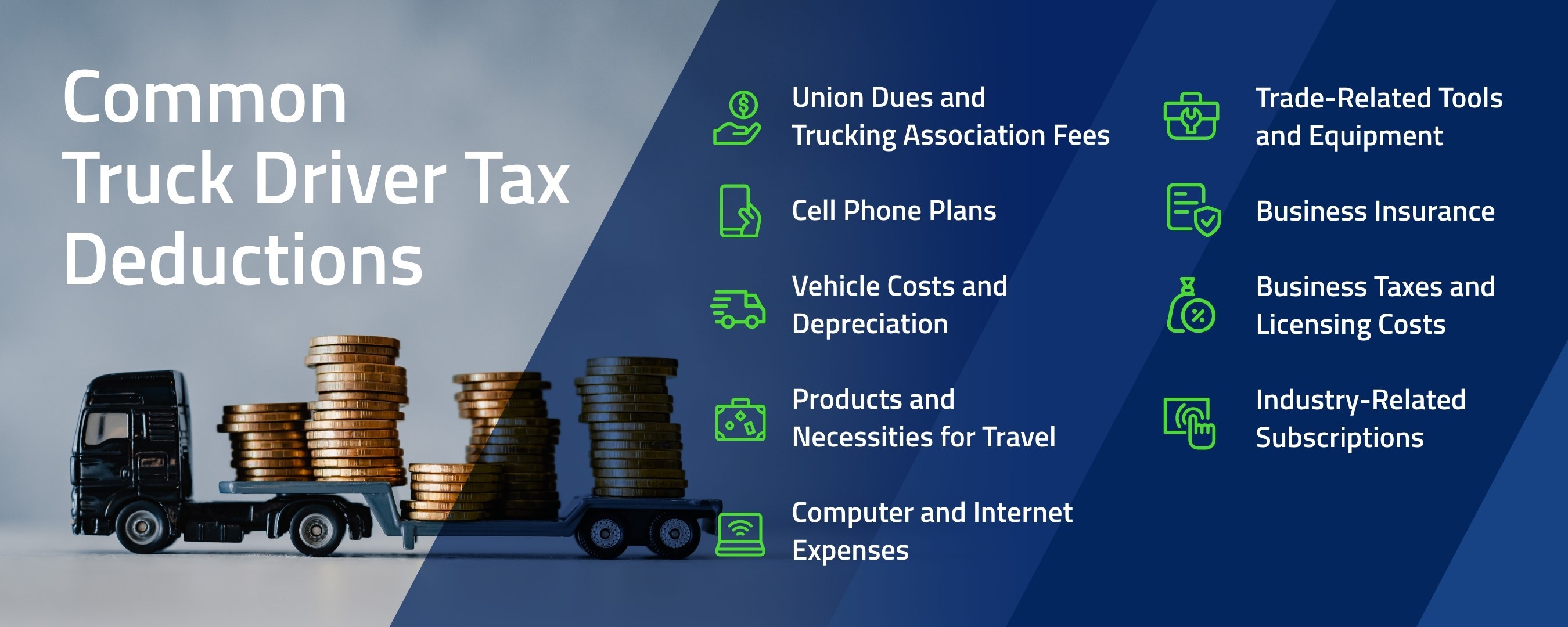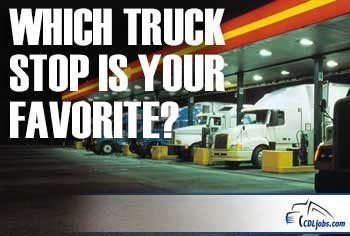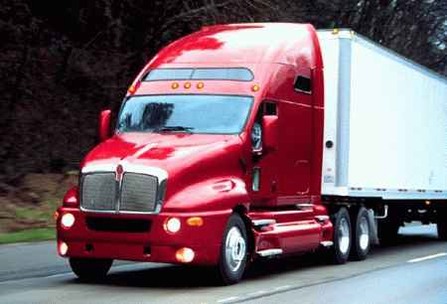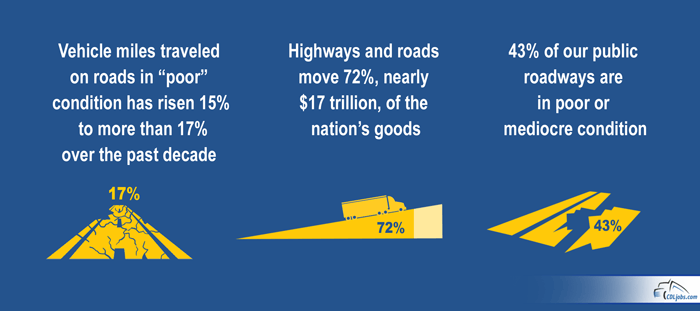Industry News & Tips for Truckers
- Details
- Written by: Tyson Williams
 Trucking industry leaders are largely pleased the U.S. Supreme Court struck down the Biden Administration’s vaccine mandate. But the impact on truck drivers in the freight hauling sector may involve a mixed bag of pros and cons. Perhaps the hottest of the hot-button political and public health debates of 2021, the 6-3 decision by the high court has mostly settled the issue for professional drivers.
Trucking industry leaders are largely pleased the U.S. Supreme Court struck down the Biden Administration’s vaccine mandate. But the impact on truck drivers in the freight hauling sector may involve a mixed bag of pros and cons. Perhaps the hottest of the hot-button political and public health debates of 2021, the 6-3 decision by the high court has mostly settled the issue for professional drivers.
Although the Supreme Court was not scheduled to resume its docket until Jan. 10, it took an emergency hearing over the vaccine mandate on Jan. 7. Driven by an Occupational Safety and Health Administration (OSHA) policy, millions of American workers in every sector would have been required to get vaccinated or undergo weekly Covid testing. The Biden Administration insisted companies with 100 or more employees follow the OSHA guidelines.
At issue for the high court was not necessarily the science or effectiveness of the Covid shot and subsequent boosters. The legal question involved whether OSHA has the authority to set such wide-reaching public health policies based on the parameters set by Congress when it was established in 1970.
“The Secretary has ordered 84 million Americans to either obtain a COVID-19 vaccine or undergo weekly medical testing at their own expense. This is no ‘everyday exercise of federal power.’ It is instead a significant encroachment into the lives – and health – of a vast number of employees,” the court opinion reportedly stated. “The Act empowers the Secretary (of labor) to set workplace safety standards, not broad public health measures. That kind of universal risk is no different from the day-to-day dangers that all face from crime, air pollution, or any number of communicable diseases.”
The 6-3 majority of justices ruled the vaccine mandates exceeded the powers Congress granted OSHA. However, a second 5-4 decision swung the other way in terms of carving out a healthcare worker exemption to getting the Covid shot. The complicated rulings left truck drivers out of the vaccine equation, in many respects. However, U.S. Secretary of Labor Marty Walsh pushed back on the loss, insisting the organization possessed the authority to implement wide-reaching public health rules.
“I am disappointed in the court’s decision, which is a major setback to the health and safety of workers across the country. OSHA stands by the Vaccination and Testing Emergency Temporary Standard as the best way to protect the nation’s workforce from a deadly virus that is infecting more than 750,000 Americans each day and has taken the lives of nearly a million Americans,” Labor Sec. Walsh reportedly stated. “OSHA promulgated the ETS under clear authority established by Congress to protect workers facing grave danger in the workplace, and COVID is, without doubt, such a danger. The emergency temporary standard is based on science and data that show the effectiveness of vaccines against the spread of coronavirus and the grave danger faced by unvaccinated workers. The commonsense standards established in the ETS remain critical.”
How Does SCOTUS Vaccine Decision Impact Truckers?
Most Owner-operators would have been exempt anyway. But truckers working for freight carriers and big-box retailers were likely to be swept up in the proposed rules. And the national shortage of Covid testing kits would have effectively locked out truckers who decline the shot for personal and health reasons.
During the rule-making process, trucking industry leaders engaged the labor department by insisting truckers were immune from such policies. The mandate was originally intended to address workplaces where people were in close proximity to each other. The American Trucking Associations (ATA) made that point abundantly clear and asserted any such rule did not apply to truckers.
“As we made clear in our comments to the Administration prior to the rule’s publication, drivers spend the vast majority of their workday alone in the cab and outside. The rule published yesterday exempts employees who exclusively work outdoors or remotely and have minimal contact with others indoors, and all indications thus far from the Department of Labor suggest this exemption does apply to the commercial truck driver population,” ATA CEO Chris Spear reportedly stated.
Had the vaccine mandate passed judicial review, the rule could have been broadly applied to truck drivers on company payrolls, even though it defied commonsense. The Biden Administration believes that vaccines and mask-wearing are the primary ways to slow the spread and prevent Covid-related deaths.
It’s important to understand that the Supreme Court decision does not necessarily prevent companies from requiring Covid shots, masks, or social distancing in the workplace. Freight carriers and organizations with fleets are simply not required to implement a shot-or-go-home policy. The same could hold true for Owner-operators in terms of allowing unvaccinated truckers inside a facility.
How Does Vaccine Status Effect U.S.-Canada Border?
Given the U.S. Supreme Court struck down a vaccine mandate and trucking industry leaders applied pressure, Canada followed suit. Canadian Prime Minister Justin Trudeau reportedly faced significant opposition party pressure and the trucking lobby to drop its previous vaccine mandate.
“For some of them, it’s been too much miscommunication. For some, (they say), ‘We’ve been doing this for over two years, I haven’t gotten COVID. I’m in a truck all by myself.’ And for others, it’s a case of religious beliefs,” Shelley Walker, president of the Women’s Trucking Federation of Canada, reportedly said.
Canadian residents who travel south of the border will no longer be subjected to quarantine, testing, or demonstrating proof of vaccination before re-entering the country. According to the Canada Border Services Agency (CBSA), unvaccinated, or partially vaccinated Canadian truck drivers arriving at the border are exempt going forward. The same cannot be said for American and Mexican truckers hauling a load to their northern neighbor, a member of the USMCA trade agreement.
Although Canada did not suffer the supply chain bottlenecks experienced at the Port of Los Angeles and Port of Long Beach in recent months, the movement of goods and materials has been challenging. Manufacturing slowdowns and the rising cost of transportation, among other factors, have driven up inflation in both countries. Reports indicate Canada struggles with 18-year high inflation. Reducing the number of truckers who can haul loads across the border will likely exacerbate the price of goods and materials.
“Feedback from Canadian Trucking Alliance (CTA) members from across the country over the last couple of weeks indicates the Canadian trucking industry is preparing or bracing for these mandates one way or another,” CTA president Stephen Laskowski reportedly said. “While there’s reportedly a modest uptick of drivers getting vaccinated at some companies, there are substantial reports of higher-than-normal turnover and others declaring their intention to leave the industry or seek employment in the provincially regulated sector over the impending mandate at the border and the recently announced domestic mandate impacting the federally regulated trucking sector.”
Truckers move approximately two-thirds of traded goods between the U.S. and Canada, to the tune of $521 billion. Upwards of 40 percent, or 16,000, American-based truckers will effectively be sidelined due to the mandate, according to reports. In the U.S., truckers reportedly move 72 percent of all goods and materials to communities.
The vaccine issue appears far from completely resolved. For more news and information about truck driving positions, visit CDLjobs.com.
- Details
- Written by: Kate Williams
 With more freight hauling work than many could handle in 2021, truck drivers enjoyed significant salary improvements. Uncle Sam expects to benefit from extended hours of service money, bonuses, and companies increasing pay rates to keep qualified CDL professionals in their ranks. Although paying taxes is an unwelcome responsibility every American shares, truckers have a reason for optimism.
With more freight hauling work than many could handle in 2021, truck drivers enjoyed significant salary improvements. Uncle Sam expects to benefit from extended hours of service money, bonuses, and companies increasing pay rates to keep qualified CDL professionals in their ranks. Although paying taxes is an unwelcome responsibility every American shares, truckers have a reason for optimism.
Changes to the tax system could result in men and women who deliver upwards of 72 percent of all goods and materials keeping a larger portion of their earnings.
If you worked a truck driving job in 2021 or plan to earn your CDL and take a good-paying position in 2022, the following information could prove useful.
What Are Truck Driver Tax Brackets?
Reported backlogs at the Internal Revenue Service (IRS) and pandemic-related disruptions prompted the federal government to move Tax Day to May 17 last year. The due date for federal taxes has been kicked down the road, slightly, from the traditional April 15 deadline to April 18, 2022. Truckers can apply for an extension and put off writing a check until October 2022. If you have a refund coming, the IRS will reportedly begin accepting 2021 filings as soon as January 24.
Truck driver tax brackets depend largely on taxable income and filing statuses, including single, married filing jointly or qualifying widow(er), married filing separately, or head of household. Professional drivers can anticipate paying more to the IRS if they were fortunate enough to cash in on rising trucker salaries. There are seven brackets for 2021 earnings: 10 percent, 12 percent, 22 percent, 24 percent, 32 percent, 35 percent, and 37 percent. According to the IRS, items that rank among the greatest interest include the following:
- For tax year 2021, the monthly limitation for the qualified transportation fringe benefit remains $270, as is the monthly limitation for qualified parking.
- The standard deduction for married couples filing jointly for tax year 2021 rises to $25,100, up $300 from the prior year. For single taxpayers and married individuals filing separately, the standard deduction rises to $12,550 for 2021, up $150, and for heads of households, the standard deduction will be $18,800 for tax year 2021, up $150.
- The tax year 2021 maximum Earned Income Credit amount is $6,728 for qualifying taxpayers who have three or more qualifying children, up from a total of $6,660 for tax year 2020.
Marginal Rates for the tax year 2021, the top tax rate remains 37 percent for individual single taxpayers with incomes greater than $523,600 ($628,300 for married couples filing jointly). The other rates include the following.
- 35 percent for incomes over $209,425 ($418,850 for married couples filing jointly).
- 32 percent for incomes over $164,925 ($329,850 for married couples filing jointly).
- 24 percent for incomes over $86,375 ($172,750 for married couples filing jointly).
- 22 percent for incomes over $40,525 ($81,050 for married couples filing jointly).
- 12 percent for incomes over $9,950 ($19,900 for married couples filing jointly).
- 10 percent for incomes of $9,950 or less ($19,900 for married couples filing jointly).
The standard tax deduction stands at $12,550 for single people or married couples filing separately, $18,800 for head of household, and $25,100 for married couples filing jointly or surviving spouses. Approximately 90 percent of taxpayers use the standard deduction that increased significantly following the Tax Cuts and Jobs Act of 2017. Truckers who have accumulated work-related expenses greater than their respective standard deduction may be better served by itemizing, according to tax experts.

Common Truck Driver Tax Deductions
If you received a W-2 from a freight hauling company, the IRS will not allow you to deduct job-related expenses. However, self-employed truckers or those operating under a lease purchase arrangement will be pleased to discover many of the usual deductions remain in place. These include the following.
- Union Dues and Trucking Association Fees
- Cell Phone Plans
- Vehicle Costs and Depreciation
- Products and Necessities for Travel
- Computer and Internet Expenses
- Trade-Related Tools and Equipment
- Business Insurance
- Business Taxes and Licensing Costs
- Industry-Related Subscriptions
It’s vital to distinguish tax-deductible expenses from purely personal ones. While items essential to your truck driving job, such as uniforms, gloves, and even sunglasses may be tax-deductible, everyday wear is typically not allowable. Commuting to and from home or a business facility is considered a personal expense, while transporting a load is job-related. Truckers are advised to maintain concise records of their expenditures and consult with a tax professional regarding gray areas.
Health Care Deductions May Lower Trucker Taxes
Owner-operators are usually tasked with maintaining a health insurance policy at their own expense. The IRS appears to be easing out-of-pocket expenses by allowing deductions. Depending on how much independent truckers spend and the way they organize their business, the following could lower your tax liability, according to the IRS.
- For the taxable years beginning in 2021, the dollar limitation for employee salary reductions for contributions to health flexible spending arrangements remains $2,750.
- For tax year 2021, participants who have self-only coverage in a Medical Savings Account, the plan must have an annual deductible that is not less than $2,400, up $50 from tax year 2020; but not more than $3,600, an increase of $50 from tax year 2020.
- For self-only coverage, the maximum out-of-pocket expense amount is $4,800, up $50 from 2020.
- For tax year 2021, participants with family coverage, the floor for the annual deductible is $4,800, up from $4,750 in 2020; however, the deductible cannot be more than $7,150, up $50 from the limit for tax year 2020.
- For family coverage, the out-of-pocket expense limit is $8,750 for tax year 2021, an increase of $100 from tax year 2020.
Health care plan costs continue to rise, and leveraging tax breaks can help independent truckers follow through with annual physicals and get the medication attention they deserve.
Miscellaneous Tax Breaks Truck drivers Can Utilize
Although CDL professionals spend long days on the road and weeks away from home, downtime and the internet can open some unique opportunities. Truckers wishing to further their education can enroll in online classes and deduct a portion of the cost. The Lifetime Learning Credit stands at $119,000, an increase of $1,000 over 2020 tax filings. American citizens who now reside and pull loads in Canada or Mexico may be able to take advantage of the $108,700 foreign earned income exclusion. And the annual exclusion for gifts remains $15,000 again this year.
There has never been a better time to earn a CDL and take a good-paying position as a truck driver. In turn, this tax information should prove helpful to keep more of your income in your bank accounts.
CDLjobs.com does not provide tax, legal or accounting advice. This material has been prepared for informational purposes only, and is not intended to provide, and should not be relied on for, tax, legal or accounting advice. You should consult your own tax, legal and accounting advisors before engaging in any transaction.
- Details
- Written by: Kate Williams
 The freight hauling industry was a hot national topic in 2021 as companies competed to fill truck driving jobs and government officials wrestled with supply chain issues.
The freight hauling industry was a hot national topic in 2021 as companies competed to fill truck driving jobs and government officials wrestled with supply chain issues.
Through it all, the women and men who deliver a reported 72 percent of all goods and materials to communities overcame adversity. While some challenges persist into 2022, truckers are enjoying higher salaries and greater job security than ever before.
These rank among the major issues that impacted truckers in 2021.
California’s AB5 Heads to U.S. Supreme Court
The Golden State adopted California Assembly Bill 5 (AB5) law in 2019 that erodes the ability of truckers to work as independent contractors. Owner-operators who haul loads for select freight carriers have been cast as employees under the law. The California Trucking Association (CTA) fought tooth-and-nail in the courts to carve out an exemption for independent drivers.
After mixed results in state and federal courts, the fate of California’s Owner-operators appears to be in the hands of the nine justices of the U.S. Supreme Court. In November, 2021, the high court requested the Solicitor General of the United States to weigh in on the issue before moving forward. The CTA indicated the request supports its rank-and-file contention truck drivers cannot be stripped of the independent contractor status.
“The decision by the U.S. Supreme Court to call for the view of the solicitor general validates the critical nature of reviewing AB5’s disruptive impact in the midst of a historic, global supply chain crisis,” CTA CEO Shawn Yadon reportedly stated. “Since the introduction of AB5, the California Trucking Association has worked to protect the more than 70,000 owner-operators in California who choose to work independently because of the freedom, flexibility, and business grown potential that this model has afforded them for decades. These small-business truckers face irreparable damage should AB5 be enforced.”
The case and fate of West Coast drivers remain in limbo as the high court had not indicated whether it would uphold an unfavorable ruling by the Ninth Circuit or support independent truckers at year’s end.
Truck Driver Shortage Creates Opportunity & Stability
The debate over workforce shortages appears to have been settled in 2021. Supply chain bottlenecks and transportation delays point to a need for more CDL holders. Industry leaders, news media sources, and government officials have largely adopted shortfall estimates of 80,000 by the American Trucking Associations (ATA). The organization also predicts that driver shortage could exceed 160,000 by 2030 unless determined measures are taken to attract new hires. The ATA issued a 2021 report highlighting the following challenges.
- High average age of current drivers, which leads to a high number of retirements.
- Women making up only 7 percent of all drivers, well below their representation in the total workforce.
- Inability of some would-be and current drivers to pass a drug test, a problem exacerbated by an increasing number of states legalizing marijuana (a substance still banned federally).
- The federally mandated minimum age of 21 to drive commercially across state lines poses a significant challenge to recruiting new drivers.
- The pandemic caused some drivers to leave the industry, plus truck driver training schools trained far fewer drivers than normal in 2020.
- Lifestyle issues, notably time away from home, especially in the longer-haul market.
- Other barriers to entry, such as an inability of potential candidates to meet carriers’ hiring standards for driving record or criminal histories.
These and other issues negatively impact the freight hauling industry’s ability to enlist enough truck drivers to make on-time deliveries. The substantial shortage has benefits for qualified CDL holders as companies offer higher salaries to attract and maintain their staff. A persistent year-over-year driver shortage also makes trucking one of the most secure jobs, bar none.
Truckers Did Good Works in 2021
Hard-working truckers invested their valuable time and energy into giving back to people and communities in need during 2021. British Columbia flood victims benefited from efforts by Trucks for Change, who worked diligently with the Canadian Red Cross to provide relief.
“Trucks for Change has a longstanding and cooperative relationship with the Canadian Red Cross that typically involves moving shipments of emergency supplies throughout Canada to support their emergency efforts,” Trucks for Change chairman Scott Smith reportedly said. “The flooding in B.C. is typically the type of disaster for which Trucks for Change’s trucking services would have been requested.”
Upwards of $50,000 in donations were reportedly raised to help communities impacted by the natural disaster.
When Montana ranchers suffered drought and grass fires, they struggled to find affordable hay. Many ranchers thinned their herds early but still faced a bleak winter. Truckers such as Jaxon Allen, who owns Wild Wild West trucking, and Heavy D Sparks from the Discovery Channel television show “Diesel Brothers,” took action. Promoting a movement dubbed “Hay it Forward,” they hauled in truckloads of Sudangrass round bales from out of state. The good Samaritan truckers agreed to charge only for their expenses. However, they donated their time, expenses, and even hay loads when all was said and done. Other truckers reportedly caught wind of their good works and followed suit.
Safe Parking Movement Put On Back Burner
 Wide-reaching trucking leaders implored Congress and the White House to allocate funds to increase secure parking spaces along the country’s supply chain. Despite the movement gaining traction during the run-up to the infrastructure legislation, it appears federal funds will be used elsewhere. Leaders at the Owner-Operator Independent Drivers Association (OOIDA) took members of Congress to task in 2021 over their failure to improve truck driver conditions.
Wide-reaching trucking leaders implored Congress and the White House to allocate funds to increase secure parking spaces along the country’s supply chain. Despite the movement gaining traction during the run-up to the infrastructure legislation, it appears federal funds will be used elsewhere. Leaders at the Owner-Operator Independent Drivers Association (OOIDA) took members of Congress to task in 2021 over their failure to improve truck driver conditions.
“Despite the long history of broad, bipartisan support, numerous government studies, and repeated pleas from truck drivers, Democrats on the T&I Committee opposed efforts to address trucking’s number one safety concern: the lack of safe parking,” OOIDA President and CEO Todd Spencer reportedly said. “Truckers likely face another five years of a worsening crisis that jeopardizes their safety on a daily basis.”
Although some driver safety advocates have reportedly lobbied DOT Secretary Pete Buttigieg to use discretionary money, federal dollars do not appear to be on the table. But the good news for people entering the sector is that private companies that own and operate truck stops are answering the call. Many increased safe parking lots and amenities. More have improvements in the pipeline.
DRIVE-Safe Act Signed Into Law
The federal government took another baby step toward allowing adults 18-20 to haul loads over state lines. As part of the $1.2 infrastructure spending package signed into law in 2021, pilot programs were expected to advance. A similar pilot program was launched by the previous administration that allowed military personnel in the same age bracket to participate in interstate transportation. However, the DRIVE-Safe Act includes rigorous standards that may not necessarily fast-track young CDL holders.
“The program requires candidates to utilize industry-leading technology including: active braking collision mitigation systems, forward-facing event recording cameras, speed limiters set at 65 mph or less and (automated manual) transmissions,” Maine Sen. Angus King reportedly said. “Candidates are required to successfully progress through two probationary driver periods – alongside an experienced driver – and demonstrate competency and proficiency behind-the-wheel across 12 performance benchmarks.”
Young drivers are also reportedly tasked with completing 240 supervised hours and 400 total hours of experience overall. That’s a high bar, and the Department of Transportation did not significantly move the program forward by year’s end.
To say 2021 was filled with trucking perks and challenges would be something of an understatement. There are an abundance of truck driving opportunities available going forward. For more information or to review trucking companies hiring, visit CDLjobs.
- Details
- Written by: Kate Williams
 The following budgeting tips for truck drivers are surefire ways to cut down on all those truck driver expenses, so you can keep more of your hard-earned money in your pocket.
The following budgeting tips for truck drivers are surefire ways to cut down on all those truck driver expenses, so you can keep more of your hard-earned money in your pocket.
Whether you’ve just begun a rewarding career as a CDL professional or you’re an experienced freight hauler, it’s never too early or too late to learn about saving money as a truck driver.
Right now, money is good in truck driving. The economy is recovering from the pandemic and supply chain logjams appear to be easing. These factors paired with the ongoing driver shortage has driver wages and benefits skyrocketing.
But that doesn’t mean you shouldn’t periodically look for new ways to save money as a trucker. The day will come when you want to leverage your finances to buy a nice house or take that dream vacation. Don’t miss out on those opportunities because you didn’t take full advantage during this booming market.
Learn how to save money as a truck driver:
Assess Your Truck Driving Expenses
1. CREATE A REDUCED SPENDING BUDGET
It seems like common sense to create a truck driving budget to help manage spending. But not many professional CDL drivers actually have one. The result? Money gets unnecessarily squandered on things like fast food and road coffee. It may not sound like much, but it adds up fast. Knowing how to save money on food as a truck driver makes a considerable difference over time (see our next tip!).
Budgeting is all about money earned minus money spent. If you don’t know where your money’s going, you’re already behind. Don’t get behind. Create a budget.
Take a long look at your weekly and monthly spending. Make a plan to cut corners and reduce wasteful expenses. Identifying the areas that cause problems is an important and necessary step to keeping more of your income. You’ll be pleasantly surprised by the savings after tallying up your expenses for just one single month. Now think about how that adds up over time!
2. MAKE AND PACK YOUR MEALS
Of all the money saving tips for truckers, making your own food more often is perhaps the most immediately impactful. Eating out is a huge expense for truck drivers. Consider investing in a truck cab fridge. You can find small and inexpensive ones online, and this small upfront cost would save you big down the road.
Packing your food is easiest if you are working a regional or dedicated trucking job. However, even if you are driving the longest over-the-road routes, replacing a few meals with some homemade ones can add up to major savings. Even if you are only spending $8 eating out per meal, that is $168 per week, and $8,736 per year. Making just half your meals yourself would create thousands of dollars in savings. As a bonus, cooking your meals is much healthier than eating fast food.
3. GET THE MOST OUT OF TRUCK STOPS
 Experienced truckers are fully aware that fuel prices vary by region and company. Planning a route to maximize the benefit of low-cost diesel remains a crucial money-saving strategy. Yet inexpensive fuel isn’t the only benefit of trucker-friendly facilities.
Experienced truckers are fully aware that fuel prices vary by region and company. Planning a route to maximize the benefit of low-cost diesel remains a crucial money-saving strategy. Yet inexpensive fuel isn’t the only benefit of trucker-friendly facilities.
When you stop to refuel, take advantage of other low-cost and free amenities. Refill your water bottles instead of purchasing new ones. Use the station’s free WiFi to manage online bill payments or respond to emails and social media messages rather than using your cellular data. Truck stop coffee can be pretty good and very cheap. Bring a thermos and fill it up. Some of the facilities even offer showers and laundry. Truckers are required to take breaks. Put that time to good use by saving money!
4. ASK ABOUT CDL Holder DISCOUNTS
Businesses offer reduced prices to groups for two fundamental reasons. First, they want your patronage. Second, it’s a way to say “thank you for your service” to veterans and first responders among others. This is why establishments offer CDL discounts. Truckers are part of the lifeblood of the country, delivering essential goods and materials. Without drivers, there would be a lot less food in supermarkets. We all remember the start of the COVID-19 pandemic.
With that in mind, check for CDL discounts at hotels, restaurants, and other businesses along your route. A Google search for “trucker discount hotels” in the city you’re staying in could save you up to 20% of the nightly rate at some places. It’s also relatively common for insurance companies to offer reduced rates. Searching the internet for CDL discounts may also uncover coupons specifically for professional drivers. Don’t pay full price if you don’t have to. Always ask if a discount is available for CDL professionals.
5. SWITCH TO LUMP SUM PAYMENTS
One common strategy that truck drivers employ is setting up automatic bill payments. Being on the road for days or weeks at a time too often leads to missed due dates. In turn, that means late fees and dings to your credit score. Although monthly automatic payments remain a smart bill-paying method, drivers could also be saving money by switching to annual lump sum payments.
By switching your monthly auto-payments to annual lump sums, numerous companies offer discounts. This generally holds true with things such as auto and home insurance, as well as subscriptions like Sirius radio or other miscellaneous services. Many of these companies encourage setting up convenient annual automatic payments. Compared to automatic monthly payments, the only difference may be more money staying in your wallet.
4. DON’T GET A TICKET
This may sound like a no-brainer, but it’s not unusual for a driver to feel rushed and push the pedal down. Speeding, other tickets, and preventable accidents are often astronomically expensive for truckers. The initial cost is the hefty fine you will have to pay. After that, drivers accumulate negative points against their CDL and, of course, insurance increases. Being a little tardy, or even a lot tardy, is far less expensive than paying a fine out-of-pocket, increased monthly insurance premiums, and risking the loss of your CDL. Watch your speed!
5. PREVENTATIVE MAINTENANCE AVOIDS BREAKDOWNS
One of the tried-and-true ways to save money as a trucker is to keep your rig in tip-top shape. That’s a lesson that drivers sometimes learn the hard way after an expensive roadside breakdown. The cost of having a mechanic come out to get you up and running can be painful. Worse, a tow to a garage that works on trucks on top of the mechanic’s regular work is only slightly less excruciating than the lost wages. Talk about a double-whammy.
Keeping routine maintenance appointments is essential to minimizing unnecessary breakdowns and their associated costs. Beyond consistent maintenance, many experienced drivers run through a safety checklist before leaving the yard. If something seems out of whack, the time to deal with such issues is before you hit the interstate. Your bank account will thank you.
6. SIGN UP FOR CREDIT CARD REWARDS PROGRAMS
The credit industry turns a profit on everyday people paying interest on credit card balances. They even offer rewards as an enticement for you to apply for their card. But they didn’t account for truck drivers taking full advantage of rewards programs and paying that card off in full each month.
CDL holders can maximize their benefits with cards that offer gas rewards and even cash back. After all, who purchases more fuel than a trucker? Nobody! A savvy trucker can use cards with high rewards, but the key is to always pay the balance off in full at the end of each month. Be careful; one misstep and your benefits earned are likely lost in full to the high interest rate you’ll pay. All you need to do is connect online and transfer the funds. And, don’t feel bad that the credit card industry is losing money on your interest. They’ll undoubtedly make a profit on millions of non-trucking Americans.
INCREASE YOUR INCOME
It’s easy to fall into bad habits when you’re driving long distances every day. Make sure you keep track of your spending so you can avoid unnecessary expenses. Also, try to plan ahead so you can save money on gas and food.
While these tips focus on spending reduction, don’t forget about working toward increasing your earnings! To take your financial planning even further, look for a new truck driving job offering better pay. Because of the current driver shortage, there are endless opportunities and companies are competing with each other for qualified drivers. Combining cost-saving efforts with a higher income will significantly improve your financial future.
- Details
- Written by: Kate Williams
 By 2024, the driver shortage in the trucking industry is estimated to reach 175,000. Trucking companies will be in serious peril unless they continue to refine their driver recruitment strategies.
By 2024, the driver shortage in the trucking industry is estimated to reach 175,000. Trucking companies will be in serious peril unless they continue to refine their driver recruitment strategies.
While there is no single best way to recruit CDL drivers, there are driver recruiting techniques that successful recruiters employ to attract good drivers to enter into mutually beneficial business relationships.
An effective way to recruit truck drivers involves a two-pronged plan of action:
- learn approaches that attract top talent to apply to your company, and
- retain those drivers by listening to their needs with genuine concern and doing your best to accommodate them whenever possible.
Knowing how to recruit CDL truck drivers is a skill, like any other, that only improves through learning and practice. Here are some ideas on how to get ahead in a challenging market:
STRATEGIES TO ATTRACT DRIVER APPLICATIONS
The first step is to capture the interest of likely employment prospects and persuade them to submit an application.
1. List Openings on Online Job Boards
When drivers search for truck driving jobs, online trucking job boards are often the place where most drivers begin. Job boards like CDLjobs.com are devoted specifically to promoting truck driver jobs and helping your postings garner more attention from qualified candidates. Listing your openings on these sites is essential to find drivers in this tough market. Investing in featured truck driving job posts which receive greater visability gives companies a huge advantage over others who are also struggling through the driver shortage all by themselves.
2. Keep Your Company Website Up to Date
In many cases, what you present online is the first impression a prospective driver will have about your company. It’s imperative that you make it a good one by keeping your content fresh and up-to-date. A prospective hire isn’t going to think much of your operations if your website promotes your 2019 pay rates and includes several broken links. If outdated information is what they find, they’ll quickly move on to another job.
Your website should also share compelling success stories from your current driving force. Interested candidates are far more likely to apply for your jobs when hearing from drivers willing to vouch for you as an employer.
3. Ask for Driver Referrals
Chances are very good that the drivers you employ now have friends who are drivers with other trucking companies or who want to get in the business. A referral program will help you find new drivers with the help of the ones you already have.
However, take a delicate approach. Make sure your current drivers know that you're not looking to replace them, but augment your current workforce, which will benefit your drivers by allowing you to take on more contracts. Offering your current drivers a finder's fee or referral bonus as an extra incentive is often especially effective.
4. Think About What Drivers Want
Your recruitment materials shouldn't be solely focused on you and your company. Demonstrate to your prospective applicants how they stand to benefit from working for you. Reference the qualities that make your company a particularly great place to work by always trying to answer the implicit question, "What's in it for me?”. Successful recruiters in today’s world aggressively anticipate driver needs. They understand that this is an extremely competitive market, and they’ll fail if they’re not able to communicate their company’s value to drivers.
STRATEGIES TO USE WHEN TALKING TO CANDIDATES
As you receive promising applications, it's best to connect with candidates quickly. You’ll need to determine if they are, indeed, a good fit for your trucking company and are still interested in the job. Use these proven strategies while engaging with prospective drivers:
1. Sincerity Matters
Show that you care about each applicant as an individual, not just as a potential resource. Address the driver by name and say "thank you" every chance you get. Applicants have an instinct for detecting sincerity and they’ll place their trust in one who shows it.
2. Be Helpful
Each applicant is coming to you from a unique situation, with different wants and needs. You won't be able to fulfill every request, but make every effort to be accommodating. Even if the answer to their request is ultimately "no," the driver will appreciate any genuine effort you make on his or her behalf.
3. Communicate Clearly
Make an extra effort to ensure that drivers understand your operation. Provide clear and detailed explanations. You may know that your company is the best fit for the driver, but unless you can get your points across effectively, he or she may not understand and move on.
4. Listen to the Driver
While you're explaining how your operation works and why your company is great to drive for, be sure to listen to the driver and understand what he or she needs from a job. Again, do your best to accommodate the driver's needs and wants to the extent possible, but if the job turns out not to be a good fit, be honest about it and don't string the applicant along by offering false hope.
Sometimes, for many different reasons, drivers may decide to move on from your company. An exit interview is an opportunity to find out why and ask if there's anything you can do to change the driver's mind. Keep this feedback in mind when hiring new drivers and use it to ensure your workforce is happy and productive.
TRUCK DRIVER RECRUITING IS STILL A PEOPLE BUSINESS
Working as a Driver Recruiter is undoubtedly a tough job. However, “We didn’t get any leads this week,” is not an acceptable answer during your management meeting when you’re getting beaten up over a small driver orientation class. Do your homework and learn about truck driver recruiting techniques. Take advantage of the strategies we’ve given here. Perhaps most importantly, make sure you’re doing business with advertising people who understand that driver recruiting is still a people business and not simply number generation. You’ll be miles ahead in the long run.
- Details
- Written by: Kate Williams
 The life of a truck driver can be quite challenging. Drivers spend long stretches of time alone transporting goods across the nation. It is vital for truckers to take time away from their cab to rest and revitalize so that they may stay alert behind the wheel.
The life of a truck driver can be quite challenging. Drivers spend long stretches of time alone transporting goods across the nation. It is vital for truckers to take time away from their cab to rest and revitalize so that they may stay alert behind the wheel.
There are plenty of popular truck stops across the country. These areas aim to make trucking jobs easier and more convenient for drivers by offering amenities and conveniences that most people typically enjoy at home. You never truly appreciate a truck stop with a hot shower until you’ve worked as a trucker!
However, there are some phenomenal truck stops take their services to another level, offering entertainment and luxuries that usually come from giant malls, shopping centers, and hotels.
So where are the best truck stops in the United States? Here is a list of truck stops that are among the most popular to get us started.
8 Popular Truck Stops around the Country
Iowa 80: Walcott, Iowa
We’ll admit, we’re a little partial to this truck stop, since its Walcott, Iowa, location is near our home base. But we’re not the only people who love the Iowa 80 Truckstop. Officially known as the "World's Largest Truckstop," this location has all the services you could ask for, including an impressive 50-foot long salad bar.
Open 24 hours a day, 7 days a week, the Iowa 80 as not closed its doors since opening day in 1964. Not only can drivers refuel, the enormous facility has grown to offer drivers eight restaurant choices, a barber shop, chiropractor, dentist, a 60-seat movie theater, workout room, laundry facilities, truck service center, truck wash, pet wash, CAT Scale, 24- private showers, a trucking museum and more!
Join the staff of Iowa 80 each July, when they salute America's truckers during the 2-day Walcott Truckers Jamboree.
Florida 595: Davie, Florida
Touting over 450 parking spots, highly-secured with 24/7 monitoring, truckers typical nightmare to find overnight parking may not be as big of a problem when you stop at the Florida 595 truck stop in Davie, Florida. Drivers will find this truck stop covers not only basic the basic amenities with a large convenience store, diner, and showers, but those who still enjoy classic communication may have their citizen band (CB) radio tuned up or repaired by a skilled technician.
Whiskey Pete’s: Primm, Nevada
If you are traveling near the state line of California and Nevada, this truck stop, operated by Flying J, presents the perfect opportunity for rest and relaxation. You can find all types of stores and services, including a renovated hotel, casinos, outlet stores, and a 24-hour restaurant.
The property originated as a gas station owned by Pete MacIntyre. The story goes that Mr. MacIntyre wasn't making a profit on the gas station alone and began bootlegging, which earned his the moniker "Whiskey Pete." In 1977, the current casino property was aptly named Whiskey Pete's in his honor. For a bit of historic nostalgia, you can visit the lobby to see the bullet-ridden car in which the notorious bank robbers Bonnie and Clyde met their demise.
Willkomm's Petro: Sturtevant, Wisconsin
Near the intersection of highways 94 and 20 between Milwaukee and Chicago, the Willkomm's PETRO gives truckers a wonderful experience for rest and relaxation. One of the highlights that makes this middle-America location one of the best truck stops is the in-house chiropractor who is also licensed to conduct DOT physicals.
The Iron Skillet restaurant that is one of the most popular among professional drivers, serving hearty homestyle meals. Add in the amenities of laundry, arcade, movie theater and chapel, and you have a winning combination.
South of the Border: Hamer, South Carolina
Located just south of the North Carolina state line, South of the Border is a unique place for truck drivers to rest and take in some entertainment. Much like Iowa 80, the facility started out as a small beer stand in 1949 and has expanded over the course of many years to what now amounts to a small town. The roadside amusement area has some of the most unique Mexican-themed attractions, including a reptile lagoon, a 100 foot sombrero-clad statue of their mascot named Pedro, golf course, and even a wedding chapel.
Pedro's Truck Stop, also known as Porky's truck stop, is located on the SOB grounds, brewing fresh coffee for truck drivers 24/7. Showers, supplies, a trucker's lounge, and a large covered picnic area are just some of the amenities offered at the truck stop.
Should drivers decide they would rather rest outiside of their cab, the campus offers a variety of renovated pet-friendly rooms at the South of the Border Motor Inn. Truckers may also choose to lodge at Camp Pedro, a campground fully equipped and offering barbeque grills.
Clearwater Travel Plaza: Clearwater, Minnesota
The Clearwater Travel Plaza has been serving professional drivers since 1976. Located west of the Twin Cities, this location has everything you would expect from a modern truck stop, including showers, a food court, a convenience store, and a lounge. Frequent visitors can take advantage of their VIP rewards program to receive digital offers and exclusive savings send directly to their mobile phone.
But what sets this location apart, ranking it among the best truck stops, is their award winning, down-home cooking, something every trucker appreciates! The restaurant serves a creamy chicken and rice soup that landed it in the top 5 trucks stops according to The Food Network.
The staff here understand that a truck driver's time is valuable and aim to make you feel at home when away from home.
Jubitz Travel Center: Portland, Oregon
This might be the best truck stop to spend an evening. Jubitz Truck Stop offers everything the commercial driver needs including full-service truck maintenance and repair facilities, ample paved parking with free Wi-Fi, clean showers, a dog wash bay, laundromat, barber shop, high-speed fueling, deli, drivers lounge, and convenience store.
With 35 electrified parking areas, you can conserve fuel while your truck is parked, and if you want to enjoy some entertainment, the live music, dance lessons, and poker nights should help you unwind after a long day behind the wheel.
Dysart’s Truck Stop: Bangor, Maine
If you value great service and hospitality, along with authentic local cuisine, then this Maine truck stop should be on your list. The homemade comfort food has people from all over visiting this destination, and truckers will appreciate the modern amenities like free wifi, private showers, and a working mail room.
Where is Your Favorite Truck Stop?
One of the frustrations that professional drivers face when driving long haul is finding a convenient place to stop. Drivers need to rest and recuperate to stay alert on the road but having easy access, plenty of parking, and safe accommodations is key.
We hope that this list of popular truck stops will be useful for your next route. If you have recommendations for other truck stops to share, please let us know and your information may be featured in future CDLjobs.com news.
- Details
- Written by: Kate Williams
 Many of us laugh at the thought of making New year’s resolutions because roughly 80% of them fail by February.
Many of us laugh at the thought of making New year’s resolutions because roughly 80% of them fail by February.
Instead of giving up on them completely, use these 6 tips to be one of the millions of people across the country who improve their life by turning a resolution into a full blown life change for the better!
Work to Keep your New Year's Resolutions
1. Identify an Area for Improvement
The life of an over-the-road truck driver is rewarding but can also be tremendously difficult. Sacrifice defines the profession as truckers spend a considerable amount of time away from their home and loved ones. Inevitably, keeping America running by dedicating day after day to life on the road puts enormous strain on other areas of your life.
The first step to solving any problem is admitting there is one. Start by identifying which of these 7 broad areas of your life may need some work: Family, Physical, Spiritual, Career, Intellectual, Social, Financial. Knowing what area(s) of your life you want to improve allows you to narrow your focus and map out a plan to achieve your resolution.
2. Goal Setting
Once you pinpoint an area of your life that you would like to see changed, set a concrete goal that will make it happen.
- You want to get in better physical shape?
- Make it a goal limit fast food to only once or twice a week on the road.
- You want more financial success?
- Make it a goal to listen to at least one personal finance podcast each day while driving.
- Are you dissatisfied with your current job?
- Apply to trucking companies that better suit your situation.
Set specific, measurable goal outcomes so that you can attain success or hold yourself accountable if you don’t meet your goal. Just the act of setting a goal encourages new behavior, guides focus, and promotes self-control.
3. Talk About It
Truck drivers go through many of the same struggles in the course of any day, week, or month on the road. Don’t hesitate to reach out to your fellow truckers for their insight about your goals. They’ve probably experienced something similar themselves, or at least they know someone else who has.
Tell your friends and family about your resolutions, too. Other people will be able to help motivate you, support you when things get difficult, and offer strategies to achieve your resolution in ways you may not have considered before.
4. Have A Purpose
Motivation comes pretty easily on January 1st when you’re bright-eyed and bushy-tailed thinking about resolutions that will better your life. It’s a lot more difficult once you’re a few weeks in and the challenges of making a change set in. In these inevitable times of doubt, it’s important to remember why you’re chasing your resolution. Being aware of your purpose, and frequently reminding yourself of that purpose, will keep you on track in moments of weakness. Say you’re chasing a goal for your family. Tape a picture of your loved ones to your dashboard, so you’re regularly remembering the reason you’re sacrificing whenever you think about giving up. Having a constant reminder of your purpose will help you persist with your resolution.
5. Visualize Success
The Law of Attraction states that positive or negative thoughts bring positive or negative experiences into a person’s life. You’re probably familiar with the old adage “he who thinks he can and he who thinks he can’t are both usually right.”
Create a vivid picture in your mind about what it will look like and what it will feel like once you accomplish your new year’s resolution. It takes intentional action to spark change. It may feel silly at first, but by visualizing success, you’re putting yourself in the right headspace to attract the change that your resolution seeks.
6. Start Small
While it’s appealing to set big, lofty goals, taking on too much too quickly is a surefire way to burnout and not make any progress. Small steps lead to big results. Instead of setting a huge goal that seems overwhelming or impossible, break it into small, actionable steps that will incrementally lead to results. Saying you want to lose 50 pounds is daunting and it’s not going to happen overnight.
Alternatively, setting specific health goals, such as eat one fruit and one vegetable every day is realistic, quickly obtainable, and builds momentum towards conquering more small goals in the immediate future. Over time, small victories add up to achieve the big, lofty goal you would have set and not reached if you tried to tackle it all at once.
By using these 6 tips, you will improve your odds of achieving your new year’s resolutions, as well as any other goals you set throughout the year. The past few years have been a struggle for many Americans. While the upcoming year may sound like "2020 - two," you can put the past behind and navigate to a new and improved route by following these guidelines to improve your life and reach new goals.
- Details
- Written by: Kate Williams
 Do you know the pros and cons of truck driving? Learning about the truck driver lifestyle might help you figure out if this career path is right for you. Whether sitting up high in the cab of an 18-wheeler rolling across the nation or delivering materials and goods on regional routes, a trucker's lifestyle offers daily adventures.
Do you know the pros and cons of truck driving? Learning about the truck driver lifestyle might help you figure out if this career path is right for you. Whether sitting up high in the cab of an 18-wheeler rolling across the nation or delivering materials and goods on regional routes, a trucker's lifestyle offers daily adventures.
Professional truck drivers explore exciting places, meet new people, and enjoy rewarding experiences that people working indoors cannot imagine. Truck driving professionals earn high-paying salaries working a variety of truck driver jobs.
This article details both truck driver benefits and struggles that drivers face, so you can decide if this lifestyle should be in your future.
BE PREPARED FOR THE TRUCK DRIVER LIFESTYLE
Recognizing the wealth of opportunities for men and women who hold CDLs attracts many people to the profession. But it’s critically important to have a sense of what the trucker lifestyle entails. In too many cases, people enter the field with expectations that it’s fast, easy cash. Driving truck remains hard work and is not suited for everyone.
According to an American Trucking Association report, 2020 saw driver turnover rates at 90 percent for large truckload carriers while small fleets saw a 3 point dip over the prior year to 69 percent. Those rates accounted for both normal attrition and drivers getting out of the industry for other reasons. Continued tightness in the driver market is expected to continue well into 2022 and beyond.That’s why it’s essential to have a realistic grasp of the industry's challenges about what the lifestyle is all about. This is what you can expect.
- Unusual Perks: It may come as a surprise, but truckers are often welcomed at stops with free coffee, lunch and other perks. In some cases, customers refuse modestly damaged packages, and you might be permitted to keep them. Truckers end up with some cool oddities!
- Trucks are Mini Homes: Today’s cabs frequently come with amenities such as air conditioning, heat, mini refrigerators, and cooking facilities. A crock pot or Foreman grill may not be entirely out of the question.
- Drive Alone: Professional drivers are generally alone in the vehicle for the entire route. The idea of picking up a hitchhiker for companionship is a poor decision that could get you fired. If you are considering a truck driving position, be sure you are comfortable with plenty of quiet time.
- Professional Courtesy: A minority of drivers believe that others should get out of their way because they are working. That attitude will likely not lead to longevity in the trucking industry. Companies routinely put a phone number on tractor trailers with slogans like “How’s my driving?” and disgruntled motorists absolutely call to complain. A courteous trucker is more likely to earn bonuses for their good driving habits.
- Capped Truck Speeds: The idea that drivers must race across the country to meet the boss’ demands is simply untrue. Today’s freight haulers are actually moving in the opposite direction by capping a rig’s speed capabilities under 65 mph. Driver safety is of the utmost importance.
- Fitness Challenge: Driving truck remains a relatively sedentary job. You will spend long hours in a seated position. This reality can lead to diminished health if you do not eat a healthy diet and do basic fitness activities when off duty. Consider getting a step counter and set walking goals, among other strategies to keep you in shape and healthy.
It takes a confident, independent personality to have a long and fruitful career as a truck driver. There are a wide range of positions besides long-haul driving, so you can choose the job that suits you best. Dedicated driving jobs with established companies can allow truckers to remain in one area and even be home every night. Plus, owner operators can negotiate pay and freelance with even more flexibility. Simply put, long-haul driving is not the only lifestyle available.
Benefits of Being a Truck Driver
Regardless of your personal preferences, there are certain aspects of the job that the vast majority of truckers agree are considered beneficial to their lifestyle.  So, why should I be a truck driver?
So, why should I be a truck driver?
- Freedom of the open road
- No boss looking over your shoulder
- Get paid good money to see the country
- Unrivaled job security
- Opportunity to become your own boss
The economic security of working in the trucking industry is undeniable. Ongoing driver shortages are forcing companies to compete by offering increased wages and benefits. There’s basically no such thing as an unemployed truck driver, just one weighing his or her best options. With that said, it still may be in your best interest to speak with fellow truckers about the realities of life on the road. Weigh their experiences and these considerations against the truck driving opportunities you are considering before you head out on the highway.
TRUCK DRIVER LIFESTYLE BENEFITS FOR MILLENNIALS
The median age of today’s trucker stands at about 47 years old. That means that over 1 million people will be needed to fill vacancies in an industry already burdened with worker shortages. By the same token, millennials are expected to comprise over 75% of the country’s labor force by 2030. It’s easy to see that millennials are the future of the trucking industry. If you are a millennial weighing your employment opportunities, it’s fair to ask: What does a trucker's lifestyle have to offer? What are the pros and cons of being a truck driver?
- Immediate Opportunity: To work in the high-paying trucking industry, millennials do not need a 4-year college degree. In fact, truck driver training schools require only a minimal investment by comparison. Trucking school can be completed in 2-3 months and good-paying trucking companies are willing to pay signing bonuses that cover part of your initial costs. What makes a truck driving career even more cost-effective is that financial aid for CDL school may be available, lowering your out-of-pocket expenses.
- Opportunity for Women: The perception of driving truck revolves around the image of an exhausted, unshaven older man driving all night and getting little sleep. Luckily, those days are long gone and much of the gender barrier that may have existed decades ago has been set aside.. Young women are rapidly entering the trucking workforce. According to USA Today, there are more than 217,000 long-haul women truckers, and the percentages rise each year. Further, women reportedly saw a $7,000 increase in driver pay over the last five years.
- Flexible Work Hours: According to reports by Forbes magazine and others, studies show that millennials place a high emphasis on flexible hours. Research indicates that many millennials are interested in non-traditional work schedules. Among the preferences outlined in the poll were alternative schedules, part-time, and freelance work. All of these options align with the truck driver lifestyle quite well!
- Excellent Pay: There are reportedly upwards of 100,000 trucking job openings available and not nearly enough qualified drivers to fill them. Today’s millennial fleet drivers are often paid $70,000 or more with the potential to earn bonuses and other perks. The pros of truck driving are simply unmatched by other entry level positions.
It’s also crucial for millennials thinking about a career as a professional driver to understand that today’s big rigs are comfortable and fully outfitted with the latest technologies. The technological advancements in other fields are being equally enjoyed by open road pros. The benefits of being a truck driver are plentiful, especially for younger professionals entering an industry desperate for more employees like them.
A robust economy and low unemployment offer working people a wealth of opportunities. Regardless of whether the economy continues to grow or another recession hits in the future, there are simply not enough qualified truck drivers to fill truck driving vacancies. One of the biggest, most unmistakable benefits of being a truck driver is that your future employment is secure. For more information about truck driver benefits or to review driving job opportunities, visit CDLjobs.com.
- Details
- Written by: Tyson Williams
 President Joe Biden signed a $1 trillion infrastructure bill into law with massive implications for the transportation industry and trucking world. The Infrastructure Investment and Jobs Act passed both chambers of Congress with bipartisan support. From the biggest financing of American roads and bridges in over a decade to the complicated debate about its impact on inflation, truckers will certainly feel the effects of this new law for years to come.
President Joe Biden signed a $1 trillion infrastructure bill into law with massive implications for the transportation industry and trucking world. The Infrastructure Investment and Jobs Act passed both chambers of Congress with bipartisan support. From the biggest financing of American roads and bridges in over a decade to the complicated debate about its impact on inflation, truckers will certainly feel the effects of this new law for years to come.
President Biden says these effects will be positive, “My message to the American people is this: America is moving again, and your life is going to change for the better.” Investment is desperately needed to ensure safe travel, according to experts. United States infrastructure received a grade of C- from the American Society of Civil Engineers in 2021, marking the first time in 20 years America has scored higher than the D range.
Bill Paves the Way for Transportation Updates
New spending in the infrastructure deal totals $550 billion. The money recently approved by Congress will be used, in part, in the following ways:
- repair bridges and roads ($110 billion),
- bolster freight and passenger railways ($66 billion),
- increase access to broadband internet ($65 billion),
- fund public transit ($49 billion),
- improve airports ($25 billion),
- strengthen ports and waterways ($16 billion),
- expand electric vehicle charging and other alternative fueling stations ($8 billion), and more.
With over four million miles of public roadways across the United States, the men and women of the trucking industry are forced to endure unsatisfactory driving conditions daily. Costs of traveling on substandard roadways can be high and have a tremendous affect on the bottom line of many trucking companies.

The Biden infrastructure bill, part of the Build Back Better plan, received bipartisan support. In addition to most Democrats, 19 Senate Republicans, including Senate GOP leader Mitch McConnell, and 13 House Republicans voted in favor of the bill.
“Folks, too often in Washington, the reason we didn’t get things done is because we insisted on getting everything we want. Everything,” said Biden. “With this law, we focused on getting things done. I ran for president because the only way to move our country forward in my view was through compromise and consensus.”
Republican Senator Rob Portman of Ohio echoed sentiments of bipartisanship. “This is what can happen when Republicans and Democrats say we're going to work together to get something done,” he stated after a signing ceremony at the White House.
Portman also applauded former President Donald Trump for his efforts to pass infrastructure legislation during his administration. President Trump declared it was “Infrastructure Week” seven times during his presidency, but new policy was never enacted.
Despite bipartisan support, fierce opposition has also come from both sides of the aisle. Progressive Democrat Alexandria Ocasio-Cortez was unwilling to vote for the bill without the inclusion of a $1.75 trillion social spending package. This package, aimed to expand social programs and combat climate change, was cut from the original $3.5 trillion scope of the infrastructure bill.
Republican Senator Ted Cruz of Texas has already introduced legislation to repeal provisions of the new law. “(Cryptocurrency) is now in danger of being stifled and driven overseas by an overreaching provision in this newly-signed, reckless spending package,” says Cruz. He calls the legislation a “devastating attack” that will stifle the exciting emerging industry that is cryptocurrency.
Bipartisan Infrastructure Deal drives America forward
No matter the politics, the Infrastructure Investment and Jobs Act is one of the largest infrastructure packages in the history of the United States and will benefit truck drivers across the country. “Roads and bridges are not political—we all drive on them,” said president and CEO of American Trucking Associations, Chris Spear. “From farmers to truckers, the millions of hard- working people who make this country great won today. Those lawmakers who put their constituents before themselves to help seal this achievement have cemented a lasting legacy that the American people will now see, feel, and use for many decades to come.”
- Details
- Written by: Kate Williams

Ready or not, winter is on its way. As a long-haul truck driver, you are likely to encounter all types of conditions during a cross-country trip: snow, ice, sleet, wind, and bone-chilling cold. Any or all of these conditions can occur at the same time, compounding the ordinary hazards involved in driving a truck.
However, winter truck driving does not need to be extremely difficult. You can meet the challenge by taking steps to ensure that your truck is prepared and learn safety measures that can help prevent accidents and protect you in the event that you get stranded.
Are You Ready for Winter Truck Driving?
Driving in a bad winter storm is often like taking a step back in time. There may be fewer filling stations and restaurants open for business. Cell phone service may be intermittent. The roads will likely be in terrible condition. Traffic will move slowly, if at all. There will be breakdowns, accidents, and stuck vehicles everywhere. It makes for a long, tedious trip and can take a toll on any truck driver.
Prepare Your Truck: 8 Things to Check
Before the cold weather strikes, planning and preparation to stock your truck is essential to keep truckers warm, dry, comfortable and well-nourished. These recommendations will help you safely survive your winter driving challenges.
1. Heater
At best, driving in a cold cab is extremely uncomfortable. In some situations, it could even be dangerous. Check your heater to ensure that it is working properly so that you have time to get the necessary repairs or replacement if needed.
2. Wiper Fluid
Visibility is crucial during the winter months. Be sure that the wiper fluid you use is a winter blend that will not freeze to your windshield. Otherwise, it will have the opposite of the intended effect and obscure your vision. At the same time, check that your wiper blades thoroughly clean your windshield and replace them if necessary.
3. Air Compression
It is no surprise to anyone that slick roads during the winter can cause accidents. Your braking system is your first line of defense. You should check all the component parts to make sure that they are in optimal condition. The power for the air brakes comes from the air contained in the primary and secondary tanks, which is pressurized by the air compressor. As the foundation of your braking system, the compressor should not be overlooked.
4. Electrical System and Battery
Nothing is more frustrating than trying to start your truck and encountering a dead battery. Power drains from a battery more quickly in cold weather. This is true regardless of whether the battery is large or small. Perform a load test on each battery and check its condition and age as well.
5. Chains
Stopping a large truck on slippery roads sometimes requires extra traction. Tire chains can provide it. Some state governments have recognized this and passed laws requiring chains under certain conditions. Learn how to apply the chains according to the manufacturer's instructions and keep them with you at all times. Remember that chains can damage tires and roads if used improperly, so be sure to take them off when they are no longer needed.
6. Blankets and Warm Clothing
Always carry extra blankets and/or a sleeping bag with you when driving in the winter. They can help prevent frostbite if you become stranded and the heater goes out. Check the cab for cold spots, sealing up drafts as necessary. Also make sure you have hats, gloves, insulated overalls and a scarf with you to keep warm when you do have to venture outside. Dressing in layers will enable you to dress warmer or cooler, depending on the circumstances.
7. CB Radio
A CB radio allows you to communicate with fellow truck drivers and learn about road conditions. Though it may seem like an outdated mode of communication, for a trucker it can be a lifesaver to stay in touch with other fellow drivers to learn what weather conditions are ahead and whether it is safe to proceed.
8. Emergency Supplies
You should pack supplies that can help keep you safe if you get stranded in winter weather. Examples include an AM/FM radio, flashlight, extra batteries, first-aid kit, water, canned/dried food, flares, reflective vest, hand and feet warmers.
You should also pack supplies that may help you get back on the road again:
- Anti-gel fuel additives and extra fuel filters
- Heavy-duty tow straps
- Sand or salt
- Shovel
- Tool kit
In addition, inspect the belts, cooling system, hoses, and tires for signs of wear. It is not only before cold weather hits that you should do this, but prior to every winter trip.
5 Key Safety Measures
Driving a truck requires that you pay close attention to the road any time of year, but winter weather means you're dealing with a unique set of road conditions. This winter, stay safe by keeping these truck driving considerations in mind when cold weather strikes.
1. Lower Your Speed and Increase Your Following Distance
When snow or freezing rain start to fall, every vehicle on the road is prone to slipping and sliding. How quickly can you react to out-of-control vehicles, ice slicks, snow pileups, and other road hazards?
In the winter, allowing for extra reaction time is essential. That means you'll need to lower your speed, increase your following distance, and add extra driving time to your schedule. Even if you're in perfect control of your truck, remember that the drivers around you might not have the winter driving knowledge that you do.
2. Understand How to Brake Effectively
Braking on slippery roads isn't the same as stopping on dry pavement. Do you know how to brake safely in winter conditions?
When you're driving in snow and ice, always brake as gently as possible to avoid skidding. Remember that anti-lock brakes can cause your truck to slide, but lightly pumping your brakes helps prevent you from losing control.
3. Watch for Black Ice
 One of the most dangerous hazards you'll encounter on the road, black ice can appear out of nowhere. Do you know how to identify and avoid black ice?
One of the most dangerous hazards you'll encounter on the road, black ice can appear out of nowhere. Do you know how to identify and avoid black ice?
When a road first starts to ice over, you might not realize that you're driving on a frozen surface. If the road looks wet but doesn't emit much spray, you're probably driving on black ice. Decrease your speed, stay alert, and get ready for slippery road conditions. Remember that other drivers might not notice the black ice, so leave plenty of space between you and the vehicle ahead.
4. Maintain Higher Fuel Levels
Winter storms can shut down roads, close gas stations, and compromise fuel supply. Do you have enough gas to reach your destination?
In optimal driving conditions, you can plan your route to the second, stopping at your favorite service stations or waiting until you're on empty. In the winter, however, you'll need to fuel up more often to make sure you're never at risk of running out of gas in the middle of a storm.
5. Double Check Your Gear
No trucker should leave home without a complete stash of winter driving gear. Have you loaded up your cab with extra clothes, food, and safety equipment?
Winter weather conditions can change quickly, so pack spare layers, a few pairs of gloves, and waterproof boots. Keep your truck running smoothly with extra windshield washer fluid and an ice scraper, and have sand, tire chains, and jumper cables handy in case of emergency. Have a flashlight and some spare batteries on hand in case you need to inspect tires or your trailer in low light. If you get stranded, you'll need to have nonperishable food and plenty of water with you.
Know When to Shut Off the Engine
As a truck driver, you're used to keeping a strict schedule and driving in challenging conditions. However, that doesn't mean you should always hit the road in the middle of a severe storm. Do you know when it's time to pull off, find a safe place to park, and shut down until the roads improve? Do you know if your trucking company has a policy that addresses winter weather conditions? Learning to communicate ahead of time may save drivers some headaches, but there are legal remedies as well.
Under the Surface Transportation Assistance Act (STAA), truck drivers do have the right to refuse to operate their commercial vehicle, free of employer repercussions, when there is fear of serious injury to driver or the public because of the unsafe driving conditions.
The Act, however, does not provide clear guidance on what constitutes an extreme hazard, so drivers who may refuse to drive in extremely hazardous weather are wise to fully document their rationale for stopping. It is essential to communicate in some written form with your dispatcher to create a record. Means of documentation to support your position may include:
- Photographs of weather conditions encountered, taken while you are stopped. Include any accidents or hazard conditions you witness.
- Reports of weather conditions from local news channels and the National Weather Service
- Screen images from your QualComm and any text message communications regarding your decision to stop
- Name, address and telephone information of any other drivers encountering the same decision to stop
With these simple tips and information, you will be driving through the winter with less stress and less danger. Nothing can guarantee 100% safety, but prepping your mind and your truck for snow, ice, and cold will help you get home safely.










